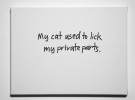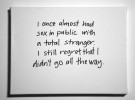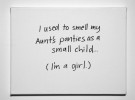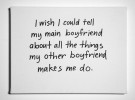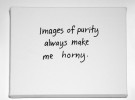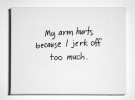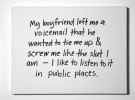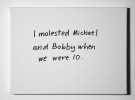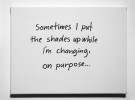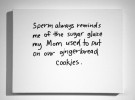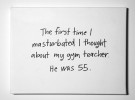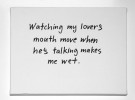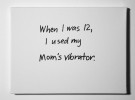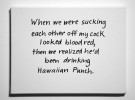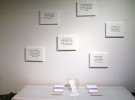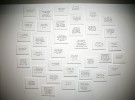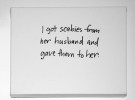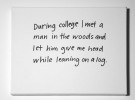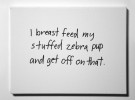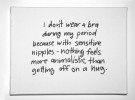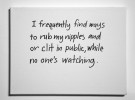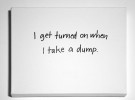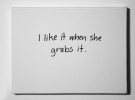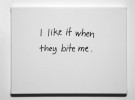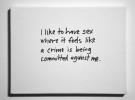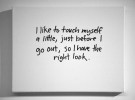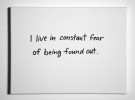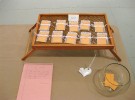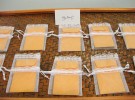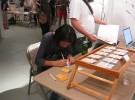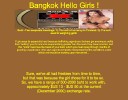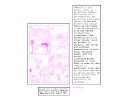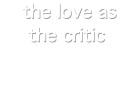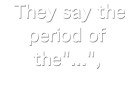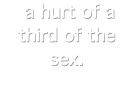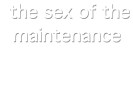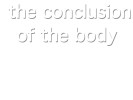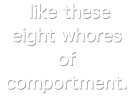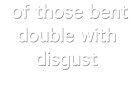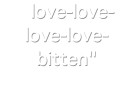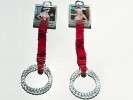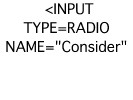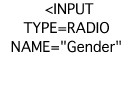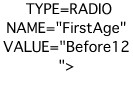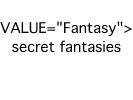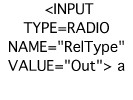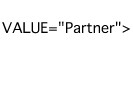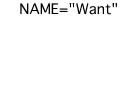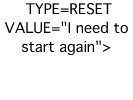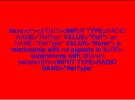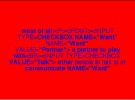Index cards, envelopes, pencils, fish bowl, and archival ink on 9″ x 12″ canvases. Dimensions variable.
Presented at “Tell Me How You REALLY Feel: Diaristic Tendencies”, The Center for Book Arts, New York, NY, 2012; “Operating System”, Sylvia Wald and Po Kim Art Gallery, New York, NY, 2012; and “Index”, Part of the Borimix Festival, CSV Center, New York, NY, 2012
Project Description:
This is a simple participatory artwork where people are invited to write down a sexual secret in pencil, on an index card, put it in a small envelope, and deposit it into an empty fish bowl.
Secrets pulled from the bowl are turned into text paintings on canvas, and a small set of these canvases are displayed above and around the station for writing.
The structure of display is intended to suggest that these shared secrets are like beautiful little fragments or gifts, thus diffusing lurid or unsettling qualities in the massage and encouraging the reader to focus on the humanity of the truth revealed.
Inspiration for the project comes from a number of sources. Many artists have worked with the idea of secrets, and there are numerous websites devoted to sharing anonymous confessions of one sort or another. I have also been intrigued by the jpeg and gif messages left by people for one another on line, often showing some cheesy romantic or sexy image along with a simple text message. (The kind of images that were to be found on My Space, Pinterest or other social interactive sites, and not infrequently covered with dancing sparkles, or animated water reflection effects.) Other sites encourage people to take photos of themselves holding paper signs with messages or promotions, or invite others to write letters or postcards and mail them anonymously to the site, where the most interesting ones will be posted.
The project is also influenced by the many short form writing technologies currently popular, including texting, IM, and Twitter.
Most of the canvases for “My Secret” are messages of only 15 to 25 words or so. Use of the index cards, rather than say a sheet of paper for participants to share secrets on, is intended to encourage this kind of short form writing.
Though the project is largely inspired by internet and digital phenomena, I chose to invite people to participate though old fashioned chirography, in part to suggest the feeling of writing in a diary, and also to evoke the long lost art of the writing of love letters, and notions of secret paramours, and found physical traces of the intimate lives of others.
Note cards, miniature manila envelopes, Lace gift bags, decorative pen, fish bowl, folding table stand, desk, and chair. Dimensions variable.
Created at, and presented during The Elizabeth Foundation for the Arts “Studio Residency for New York City Arts Workers”, New York City.
Project Description:
This is a simple interactive artwork where people are welcomed to write down a sexual secret on a small folding card, (resembling a mass produced gift card), put it in a small manilla envelope, and deposit it into an empty fish bowl. At intervals the secrets are pulled from the bowl and placed in miniature lace giftbags, where they are displayed on a small folding table stand. These can be opened and read by visitors, who then put them back for the next viewer to encounter.
The structure of display is intended to suggest that these shared secrets are like beautiful little gifts, thus diffusing lurid or unsettling qualities in the massage and encouraging the reader to focus on the humanity of the truth revealed.
Single channel, framed, wall mounted, 4 second loop, video work. 8 1/2″h x 11 1/2″w x 1 1/2″d Presented at the Heskin Contemporary gallery as part of the group exhibit Meet Cute curated by Elizabeth Heskin & Marcy Brafman.
Eromenia, explores contemporary East/West cultural constructions of sex, commodification, and idealization, in a way that embraces nostalgia and at the same time questions how much value people can actually receive from delusions of eros.
Â
Photo Documentation:
Â
Video Documentation:
[tubepress mode=’playlist’, playlistValue=’259B7AED291DCF58′]
Project Description:
The piece is made from advertisements for software designed to create “sexy” soft-core porn images which pop up on a computer’s desktop as a kind of “pleasant distraction”. In the case of Eromenia, the image is captured and memorialized in a small wooden frame designed to suggest the kind of keepsake photographs typically found in a middle aged Western male’s den or home office.
The image, made from a gif of only a very small number of pixels, has been further smoothed and simplified to erase all recognition of the original form, yet the movement is still utterly clear – some kind of fetching, erotic rocking or swaying.
The title of the work is intended to sound like the name of a Greek Goddess or Muse such as Eidyia, Ilithyia, Eunomia, or Urania and to evoke Erato the Muse of love and erotic poetry.
It is also intended to evoke two other notions: the late 20th century Japanese phenomenon of “Eromanga” and the long-standing Western clinical notion of “Erotomania.”
“Eromanga” is also referred to as “Hentai”, the Japanese word originally meaning “metamorphosis” or “abnormality”. In Japan “hentai” has a strong negative connotation, and is commonly used to mean “sexually perverted”. The term is used as slang for sexually explicit or pornographic pop culture imagery. Manga, the Japanese word for comics, along with the prefix “ero” (erotic) creates a wordplay, indicating perverted comics or animation.
Mania is a severe medical condition characterized by extremely elevated mood, energy, and unusual thought patterns. The experience of mania is often quite unpleasant and sometimes disturbing, and may lead to impulsive behavior, frustration, and decreased ability to communicate. Severe forms of mania cause impairment.
Erotomania is a form of the disorder in which a person holds a delusional belief that another person, usually of a higher social status or greater beauty or sexual attractiveness, is in love with them. Though its use continues into the present, early references to the condition can be found in the work of Hippocrates and Plutarch.
Eromenia, thus explores contemporary East/West cultural constructions of sex, commodification, and idealization, in a way that embraces nostalgia and at the same time questions how much value people can actually receive from delusions of eros.
Fictive.net in conjunction with The Point art gallery launches Fictive Net Porn, a fictional World Wide porn megasite directory. Fictive Net Porn features the work of over 70 artists, writers, and programmers from around the globe who seek to address the contemporary phenomena of pornography on the internet.
Â
Screen Captures from the site:
Project Description:
There are a million different responses to Porn. Everyone has a unique relation to it. Whether they use it, try to avoid it, fight against it, or make their own. There is more porn and more access to porn than ever before in the history of contemporary society. Yet despite its ubiquity it is rarely discussed.
Some people feel that porn is an exploitation of woman as serious and severe a crime as rape and must be stopped at all costs. For others it is a scourge which we must accept, the price paid for protecting our freedom of speech. Still others see attacks on porn as negative, an attempt by conservative hetrosexist patriarchal society to repress the power of sex and fecundity inherent in women, or the fundamental right of gays, lesbians, hetros, and a myriad of other genders to make their own choices in terms of sex, gender, and desire. They see exploitation and negative stereotypes in porn as a problem inherent in all aspects of contemporary society and something to be battled on all fronts, but not a reason to stop erotic expression. For some the biggest problem with porn is there is not enough GOOD pornography. There is a women run sex toy shop in New York addressing the issue by producing their own videos, showing women of color having sex in positive ways.
The development of videotape and the internet have had a huge impact on access to porn. People used to have to travel to some seedy part of town and risk being recognized if they wished to purchase it. With the advent, first of porn videos, and later of net porn, there was a sudden explosive rise in the number of people viewing porn, and the amount of pornography being produced.
Porn is now big business. – In January 2000, 17.5 million people (in the USA alone) visited porn sites from their homes, according to the U.S. Nielsen ratings. Data research firm Datamonitor predicts spending on access to adult sites to reach $3 billion a year, by 2003. According to the New York Times, “The General Motors Corporation, the world’s largest company, now sells more graphic sex films every year than does Larry Flynt, owner of the Hustler empire.”
As a result of the internet, porn is also now a World Wide phenomena. People from every culture around the globe are viewing porn. Not only are main stream Western cultural depictions diffusing into the rest of the World, but also practices or interests particular to each Nation or cultural group are starting to leap borders.
Subcultures of interest are also coming together in a way that has never been possible. People who a generation earlier might have lived out their entire lives believing that no one else could possibly share their particular sexual interest or proclivity are discovering that, in fact, there are thousands of like minded people.
The mass viewing of porn is an unprecedented cultural event in history, yet there is surprisingly little discussion about it. What does all this virtual fantasy do to us and for us? With the number of adult oriented sites on the net at 40,000 and growing everyday it seems like high time to tackle the question. Working with a host of collaborators including visual artists, graphic designers, writers, architects, anthropologists, and programmers, across continents, genders, and ethnic backgrounds, FICTIVE launches Fictive Net Porn – a giant fictional porn megasite directory. Fictive Net Porn – a comprehensive smorgasbord of art/porn porn/art sites sure to get you hot, or at least hot under the collar. Fictive Net Porn – bringing the issue of pornography right to your lap, (or laptop.)
Fictive net porn – its not porn, its art about porn.
Special thanks:
the point
Formavision
Geronimo Creative Workshop
Mixed Mess@ge
AfterPlanet,
Zengo Productions
Penthouse.com
Sowear
Chris Jordan
Klimate
Toys in Babeland
Soomska Vodka
http://www.fictive.net/porn/
Translating Angel, Engine of Desire. Erotic Love Poems of the Translating Angel.
A set of digital poems first presented as part of rhizome.org’s Open Mouse series, New York City, involving text sources from Andrea Dworkin’s definition of pornography, and from medical abstracts about sexual dysfunction, run repeatedly through translation engines till they break down into poems.
View video stills:
Â
Video Samples:
Note: The following are three poems from a larger collection. This work is video only, (there is no audio.)
[tubepress mode=’playlist’, playlistValue=’ED81ED45195EA5DF’]
Project Description:
Digital poetry as a form of literature is pursued through a wide variety of approaches, including in this instance, the use of machine translation to assist in the generation of work.
The translation process may be stated as follows: one, decoding the meaning of the source text, and two, re-encoding this meaning in the target language. Since the 1950’s and even before, people have been searching for a solution that allows machines, in this case computers, to do the job of translation effectively. None the less, problems with living languages such as inherent structural ambiguity, bilingual structural differences, and word-sense disambiguation when a word can have more than one meaning, have remained significant stumbling blocks in the way of this goal.
Today rough machine translation is available to everyone on the web, but it is still only moderately effective. Errors are compounded if the text is run through the translator back and forth repeatedly, and especially if it is translated across a host of languages. This “round-trip translation” method has been used by a number of people for the sake of humor. Most of this work focuses on the preposterous errors that arise and lack of usability, or loss of meaning in the origin texts.
My interest, on the other hand, is in the way meaning continues to cling to words even as text is radically altered through machine transcription. By taking preliminary sources that are dry descriptions of sexual dysfunction or list definitions of what constitutes pornography and running them though this generative process, the academic structure and catalogue nature of the text breaks down. Simultaneously, that which the words refer to opens up, suggesting stories of individuals with questionable secrets struggling with the momentous life issues associated with sex.
Much beauty in poetry derives from the very linguistic anomalies that confound machines in translation, and use of computing to either create poetry all on its own, or to serve as a tool to generate forms for alteration or inspiration, is a growing activity.
The poems in the Translating Angel have been run through a translator many times with experimentation in terms of languages used, order of cycles and number of iterations. This process produced a large series of works from which a small set were chosen. These were then lightly edited, mostly to remove odd characters and certain non English or gibberish words.
The title of the work is a reference to Charles Babbage’s precursor to the computer, the difference engine, and to the classical notion of poetry taking flight.
A pair of objects made at invitation, to be auctioned as part of a benefit for Harvey Lichtenstein in celebration of his retirement from the Brooklyn Academy of Music (BAM) after his 32-year reign as the institution’s executive director. In 1999 President Clinton awarded Mr. Lichtenstein the National Medal of Arts.
Made from old fashioned silicone furniture sliders, lingerie garters, shower curtain hooks, 50’s era holiday fetish images via internet download, picture hanger hardware.
Project Description:
Mr. Lichtenstein is famed for his consistent presentation of cutting edge work exploring difficult issues, including power, sex, and gender. His first season at BAM (1968-1969) included Alban Berg’s sensational and Lurid opera “Lulu,” in which the main character actively prostitutes herself and also included The Living Theater’s “Paradise Now,” involving audience participation, and a notorious scene in which actors recite a list of social taboos that include nudity, while themselves disrobing; which led to multiple arrests for indecent exposure, during the life of the work.
The pair of objects is designed to resemble earrings or Christmas ornaments and references fashion and costume fetishization, while at the same time evoking a sense of “wholesome” 1950s era nostalgia.
The work partly explores what it means for a powerful male from this era to retire. The figures suggest theater starlets, a tawdry version of the Radio City Rockettes Christmas show, and notions of the “casting couch”. In one reading, we see the oppressed woman presented in the attitude of trophy gift and rightfully deserved object for the male who has achieved a heightened social status, and who will now, in retirement, reap the rewards of a lifetime of oppressive power accrual. Though gendered, they also stand in for all people who must labor and “put out” for the powerful in order to survive.
At the same time a heightened sense of the humorous absurdity in codified gender and power roles, (the awareness of which might more typically be found within gay and transgender communities,) could read these as idillic souvenirs of a bygone era. A kind of tribute to an imaginary past where sex is idealized and the fictional roles of “Boy” or “Girl”, Â “Dominant” or “Submissive”, “Object” or “Objectifier” can temporarily be inhabited and reveled in by anyone, no mater what their gender or orientation. A kind of bacchanalian celebration of richly deserved reward.
They are intended to suggest decoration and celebration, provocation and transgression, costume and theatrical spectacle, all in honor of the man who founded the Next Wave Festival, and showed us things that others were afraid to reveal.
Radio Name, a Kind of Loss or Heartache
An HTML text poem as digital projection, first presented as part of Digital Lion, an evening of computer art at Baktun, New York City.
Â
View low resolution images of the slides (black and white version):
Â
View low resolution images of the slides (color version):
Â
Video Sample:
Note: This work is video only, (there is no audio.)
[tubepress mode=’playlist’, playlistValue=’4914B4A0D788756E’]
Project Description:
On the internet there is a bit of text code named for the physical buttons used on older car radios to select preset stations – when one of the buttons was pressed, other buttons would pop out, leaving the pressed button the only button in the “pushed in” or chosen position.
Sometimes when you are filling out an on-line form you are asked to click on little buttons to indicate a choice between one of several possibilities. These elements within HTML web forms are called Radio Buttons, and if you look at the source code each one is actually only a piece of text and will have a “name” and a “value” ascribed to it.
As I was teaching myself HTML for the first time, and looking for examples of forms to better understand them, I ran across the code for a form which was a long on-line survey for some company that sold vibrators and sex toys. They wanted to understand their customers in order to serve them better.
As I looked at the source code, I was struck by the word “value” which is part of programming language but can relate to money and commerce, can also be used to indicate that which we as human beings care most deeply about, on a fundamental level.
Reading further through the code I felt a sudden overwhelming sense of sadness at the human condition. Not a disgust for the subject of the survey but rather a heightened awareness of the isolation people can suffer from and the genuine emotional needs that bring people together.Â
Many elements of the code seemed to be speaking with multiple meanings. Even practical and mundane elements of the survey such as a button at the end for anyone who had accidently made errors, which was labeled “I need to start again” seemed also to reference a lonely soul.
Radio Name, A kind of loss or Heartache is a revealing or a making visible of the original hidden text of the HTML source code for that sex survey, with edits and alterations which both break the code and add to its poetic meaning.
It is presented as a series of slides in either 800×600 pixel resolution on a computer monitor or alternately on a DVD as 640×480 pixel SD video resolution output. It has also been presented in two different iterations, one in color and the other in black text on a white background. In the color version the blue of the text refers to color coding in HTML text editors and the red of the background alludes to the lurid quality of the original survey.
